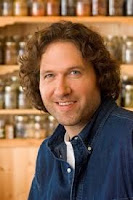There is an amazing movement sprouting up: A Maker Movement. Where people in spaces and places all over the world, come together to make things. Productive things like 3D printers made from scratch, with human hands, in small rooms, by tiny teams. Or fun, imaginative things like go karts that look like cupcakes. Depending on the persons involved or the viewpoints of one, the printer might be fun and imaginative and the cupcake go karts productive. But that’s the essence of the whole thing right there. Making, Makers, Maker Spaces and The Maker Movement is at the same time fascinating and captivating, indefinable and non-capturable. You can’t pin it down to reasons for being, or the potential it holds.
It is The Maker-Dom, a kingdom unto it’s own.
It’s tentacled still in terms of it’s ideologies. ‘Making’ could be a counter-point to traditional education models. ‘Making’ could be anti-consumerist, or anti-corporate: an alternative to buying. ‘Making’ could be evolutionary and natural, meaning with ‘making’, we are just getting back to our inborn instincts and abilities. ‘Making’ could be an outcropping facilitated by the access that technology provides. Or ‘Making’ could be a cry of individualism to see ‘self’ imprinted on ‘things’.
The Maker Movement has its characters – a cast of thousands in all corners of the globe. Kids, Parents, Nerds, Artists, Scientists, Businesspeople and Billionaires. Perhaps that’s why it enthralls me so. Let me introduce you to three of these characters I came across in my investigative travels.
MAKER 1: Gail Folsom of The League of S.T.E.A.M.
Here she is, the gorgeous lady that first caught my eye. The League of S.T.E.A.M. was birthed when years ago Gail Folsom wanted a costume for a party that glowed, functionally, and so, she collaborated with her husband, an accomplished prop designer to make it so. Acclaim came, the idea grew, others came on board and now The League of S.T.E.A.M. is a veritable indie Cirque du Soleil of entertainment. A traveling theatre troupe, music partnerships, a podcast and web series, plus merchandise for sale has made this Maker’s Maker-Dom.
For fear of mis-representing the glory of this being, the League of S.T.E.A.M. self-describes as:
“We are monster hunters from the Victorian era. From up on the stage to mingling with the crowd, our members engage the audience with proton packs capable of firing blasts of “steam,” zombie man-servants on chain-leads, net guns and titillating electro-shock packs and ethereal glowing ghosts. Every piece of machinery is meticulously designed, detailed, and fully functional, from the steam cannon to the extendable “Punchy Fist”. The League of S.T.E.A.M. is one of the fastest-growing entertainment groups of its kind, and our series of filmed exploits has ensured us a popularity that fills our events to capacity.”
MAKER 2: Lindsay Lawlor and Russell, The Electric Giraffe
Inspired by trips to Burning Man, and a want to create a device that would get him up high, carry a few people and pump out “some bitchin’ sound”, Russell was born. Russell is a maze of wires and components and a product of thousands of lines of code yet looks like a ferris wheel come to life. Dotted with glowing lights and outfitted with ‘eyes’ that seem to convey emotion, Russell always ‘gets the mike’ so he can speak for himself. Russell narrates his ongoing upgrades via blog-stream at Lindsay and Russell’s Maker-Dom destination at electricgiraffe.com:
“Ouch! That plasma torch hurts!!! HELP, he's gone nuts!!! Help! Eeek! My owner went crazy and tore me to pieces! He’s assured me I’ll look better than ever, but for now I’m very nervous about my future and wondering what’s going to become of me!”
MAKER 3: Michael Smith, The Inn Chef
Many know Michael Smith as popular TV food personality, published author, professional chef and food ambassador.
But Michael is also a Maker.
Says Michael: “I think one of the neatest things about cooking and recipes in particular is how easy it is to make them your own, and stir your own personality into them…the essence of a recipe is that it’s just a starting point…a good well-written recipe is the kind of thing where you can free-style and riff off of it…to be successful with a recipe, you don’t have to do it exactly the way the person who wrote the recipe does it, but you find a way to stir your own ideas into it…there is an interesting trend called open-source recipe sharing…let’s see what we can do when we collaborate on what a perfect recipe can be…”
You can see the full interview with Michael Smith and Maker Culture on Youtube.
This is only a tiny little sampling of the Maker-Dom cast. And there is even more fascination to find when you begin exploring Maker Spaces, like Maker Faires and NYC Resistor Lab, or Maker Media via Make Magazine or Make Online.
If this interests you, start exploring…better yet, start Making!
Picture sources: http://campusprogress.org/, http://igargoyle.com/, http://seaandbescene.com/2011/



